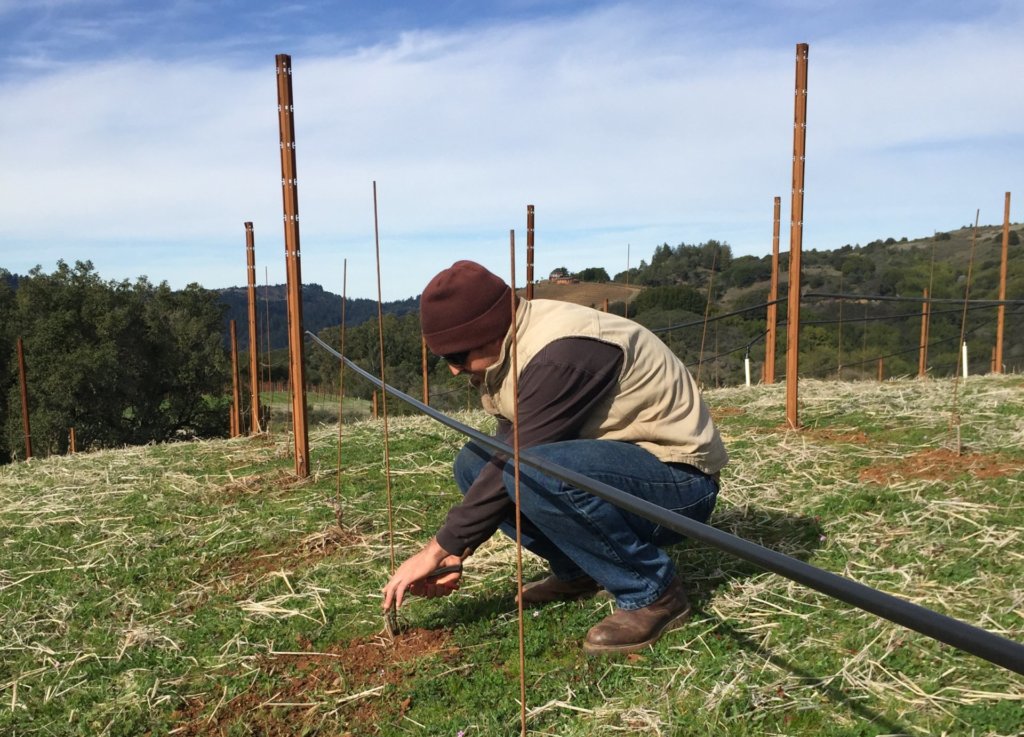What is a Wine Grape Clone? Wine Clone Definition & History
Blog Post
Like many wineries around the world, Ridge Vineyards has made use of wine clones throughout our vineyard plantings. So what exactly is a wine clone, and why are they so important to the health of a vineyard? David Gates, Senior Vice President of Vineyard Operations, dives into these questions below:
The History of the Wine Clone
Grapevines have been grown from millennia for wine, raisins, and fresh fruit. They are heterozygous, like us – seedlings are unique individuals, related to but different from their parents and siblings (one famous example, cabernet sauvignon is a cross between cabernet franc and sauvignon blanc).
Astute viticulturists recognized and selected new grapevines that had desirable traits and vegetatively propagated these new varieties. Up until the middle of the last century, when a winegrape grower wanted to plant a new vineyard they would collect budwood from the best vines in the surrounding vineyards for propagation: the growing of new vines.
The resulting vineyards are called field selections (selection massale in French) since you are selecting different individual vines amongst the many growing in any vineyard block. These vines can be a single variety in each block, such as pinot noir in Burgundy. They can also be many different varieties mixed together in each block, much like Old Patch at Geyserville, where zinfandel is interplanted with carignane, petite sirah, mataro, alicante bouschet, syrah, grenache, palomino, and others.
Over the centuries it was noticed that individual vines within a variety could show slight variations due to natural somatic mutations (looser or larger clusters, larger or smaller berries, little or no color in the grape skins, different growth habit, etc.).
If these variations pleased the viticulturist, this new selection could also be propagated vegetatively. Over time, these mutations resulted in unique vine populations within varieties, often specific to a region or village.
What is a Wine Grape Clone?
There has been a relentless push in the last century to improve agriculture throughout the world, including viticulture. Government agencies collected grape varieties and began to analyze and categorize any variations within varieties. If a particular variation or selection was deemed worthy to be recognized as unique, superior, or suited to a specific use, it was held separate for propagation.
The vines propagated from these individual selections are called clones; they all come from the original mother vine. The number of clones per variety varies and depends on the age of the variety (ie. pinot noir has more different clones than cabernet sauvignon), its economic importance (ie. shiraz/syrah in Australia and France), and the variety’s prestige (cabernet sauvignon has many named clones, with not much difference between most of them other than the vineyard/winery attached to the name).
Clonal research in grapevines is vital to try to save and categorize as much genetic variation as possible, which will continue to improve wine quality.
The Pros and Cons of Wine Clones
The biggest drawback of field selection is the systematic spread of virus diseases in grapes (and other perennial crops). Once in a vine, the virus is always there, and if a diseased vine is used for propagation, the resulting “offspring” will also carry the virus. Planting booms over the years magnified this problem, with most California vineyards planted from the1920’s through the 1960’s being heavily infected with a virus.
At Ridge, we have sought out clones from old vineyards to propagate when we are planting new blocks. We choose a mix of many different clones within each variety to mimic the field selections. We feel that these blocks of many individual clones make better wine than mono-clonal vineyards. We also mix varietals within our zinfandel-dominant vineyards.
These plantings represent our viticultural history; as such they are worth preserving and they make great wine.
Resources Related to Wine Clones
If you liked this resource on wine clones, and you’re looking for more related information, try reading the following resources:
Wait!
In order to qualify for user related discounts, you must log in before proceeding with checkout. Click the button below to log in and receive these benefits, or close the window to continue.
Log In
